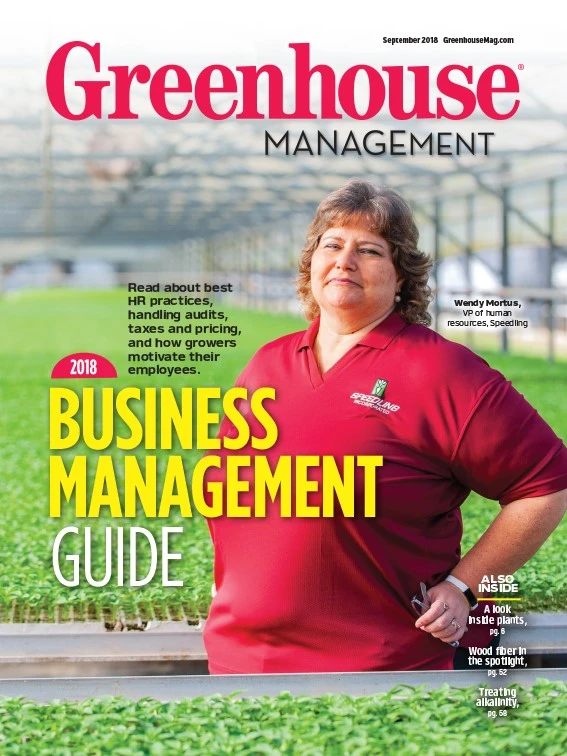
A well-draining, sandy loam, moderate temperatures and “decent” snow cover allow Walters Gardens to produce high-quality bare root plants that help growers save on time and costs, says Laura Robles, trials manager of the Zeeland, Michigan, wholesaler.
“Our growing conditions in West Michigan allow us to grow high-quality plants in our fields, leaving us with generously sized, vernalized bare root material with lots of stored energy for our customers,” Robles says.
Walters Gardens’ location offers more benefits to growers than climate conditions. “Since we are producing our bare root material right here in the U.S., we do not have to treat our plants with hot water dips or other treatments that are often required for shipping material in from offshore,” Robles says. “These treatments can result in lower quality by affecting emergence and uniformity of the crop.”
The wholesaler is diligent in maintaining plant health for growers, providing all virus-indexed bare root crops that it tests regularly to make sure they are clean and free of diseases. “We are also extremely careful about sanitation both in the greenhouse and in the fields, and scout regularly for weeds, insect damage, variations in growth and overall plant health,” Robles says.
By providing healthy bare root locally in the United States, Walters Gardens can assure growers they will deliver quality product without hassle.
“Bare root perennials are commonly available to ship from fall through spring, often when temperatures are below freezing, and are much less prone to cold damage during shipping than fresh [non-vernalized] liners are,” Robles explains. “Growers get what they need and don’t have to hassle with claims and changes in planting plans due to receiving damaged material.”

Robles says there are several benefits for growers when using bare root inputs, which lead to healthier and stronger-performing plants for better profits.
“Planting bare root provides growers with a quick-turn item — most of the varieties we sell as bare root can be finished in about six to eight weeks,” Robles says. “Quick turns can increase profitability, since growers can have more product cycle through the greenhouse in the same time frame.
Compared to plugs, bare root perennials are generally larger and store more energy, Robles says, adding that this “results in increased vigor, more branching and therefore, quicker container fill. Bare-root inputs often allow growers to quickly produce plants in larger containers, which then command [a] higher dollar [value].”
Using bare root inputs could also save growers money on production costs by saving steps in the growing process.
“Many perennials started from bare root don’t require pinching, and often less PGR is needed to finish a crop from bare root [versus] from plugs,” Robles says. “[A] reduced need for pinching and PGR reduces costs associated with labor and chemical[s].”
Robles says Walters Gardens’ bare root plants get positive customer feedback.
“There are still a lot of growers who don’t realize the value of bare root,” she says, “But once we show them and they give it a try, we often end up with repeat or expanded orders for our bare root material.” — Samantha Cottrill

Explore the September 2018 Issue
Check out more from this issue and find your next story to read.
Latest from Greenhouse Management
- Anthura acquires Bromelia assets from Corn. Bak in Netherlands
- Top 10 stories for National Poinsettia Day
- Langendoen Mechanical hosts open house to showcase new greenhouse build
- Conor Foy joins EHR's national sales team
- Pantone announces its 2026 Color of the Year
- Syngenta granted federal registration for Trefinti nematicide/fungicide in ornamental market
- A legacy of influence
- HILA 2025 video highlights: John Gaydos of Proven Winners





